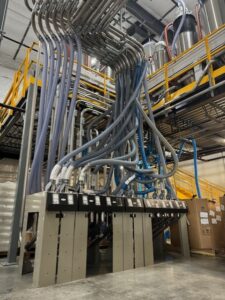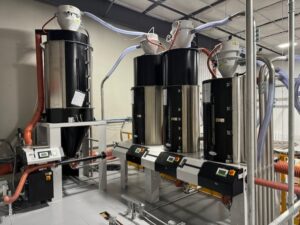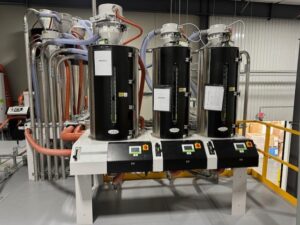Do I invest in In-House Automation Capabilities?
At Texas Injection Molding, we understand that engineering precision, process consistency, and uptime are non-negotiable. In today’s competitive manufacturing landscape, having the ability to design, engineer, and build custom automation solutions in-house isn’t just a value-add—it’s a strategic necessity. For engineering teams that rely on predictable, scalable production, our internal automation capabilities offer a significant technical and operational edge.
Why In-House Automation Matters to Engineering Teams
Many injection molding companies depend on third-party integrators or off-the-shelf automation platforms. While these solutions can serve their purpose, they often fall short when it comes to application-specific requirements, long-term maintainability, and the agility needed for continuous improvement.
By contrast, our in-house automation team brings the full development cycle—design, build, integration, and support—under one roof. Here’s what that means for engineering professionals like you:
1. Tailored Solutions for Complex Applications
No two molding programs are alike. Whether you’re dealing with delicate overmolded electronics, tight-tolerance components, or multi-cavity tooling, automation must be as unique as the parts being produced. Our in-house engineering team collaborates closely with our customers to:
-
Design custom end-of-arm tooling (EOAT) for complex part handling
-
Integrate vision systems for part inspection, orientation, or verification
-
Develop pick-and-place robotics, conveyors, and post-molding assembly stations tailored to the application
This level of customization ensures that automation is optimized for part geometry, material behavior, and cycle time—something generic equipment simply can’t match.
2. Accelerated Project Timelines
One of the most significant engineering constraints is time. When automation is outsourced, lead times can stretch for weeks or months due to back-and-forth communication, design misalignment, and long delivery cycles.
Our vertically integrated model allows us to prototype, test, and iterate automation systems quickly. This directly reduces time-to-production and gives your team greater agility when responding to design revisions or scaling requirements.
3. Improved Uptime and On-Site Support
Downtime on an automated production cell can cripple throughput and delay deliveries. With in-house-built equipment, we eliminate the finger-pointing and wait times that often come with third-party service providers.
Our automation and maintenance teams are cross-trained, enabling real-time troubleshooting, repairs, and continuous improvement without external dependencies. For engineering and operations teams, this means greater confidence in meeting production targets and quality benchmarks.
4. Scalable Innovation and Cost Control
By controlling the design and fabrication process internally, we can scale and replicate successful automation cells across multiple lines or facilities without starting from scratch. This scalability drives down costs per part and supports long-term program viability—especially in high-volume, high-mix production environments.
A Competitive Advantage Built Into Every Program
At Texas Injection Molding, our commitment to in-house automation isn’t just about reducing costs or increasing speed—it’s about enabling smarter manufacturing for our customers. For engineering teams looking to partner with a molder that brings real problem-solving and system-level thinking to the table, our internal automation capabilities are a critical differentiator.
Whether it’s optimizing cycle times, reducing labor, or ensuring zero-defect part handling, our automation team is fully integrated with tooling, molding, and quality engineering to deliver performance that goes beyond the press.



